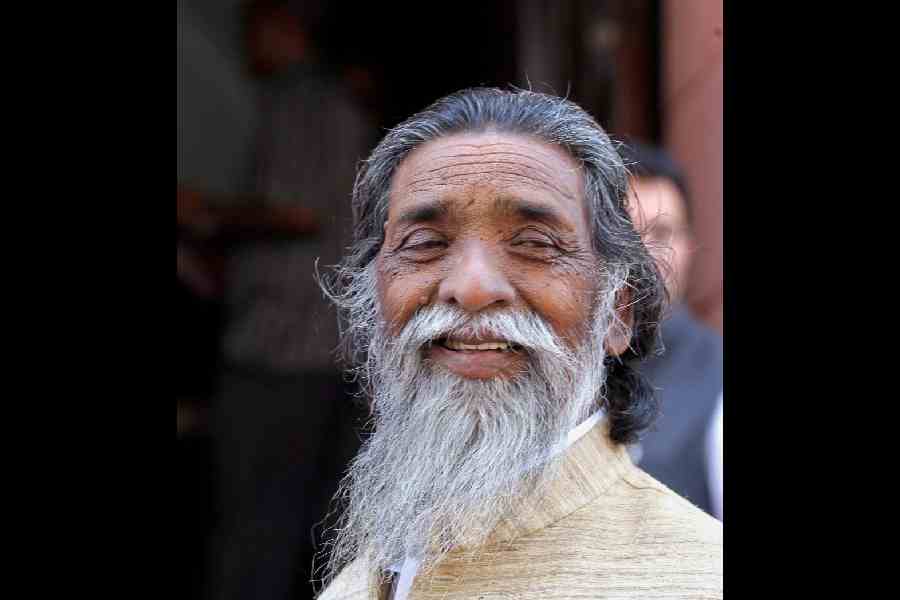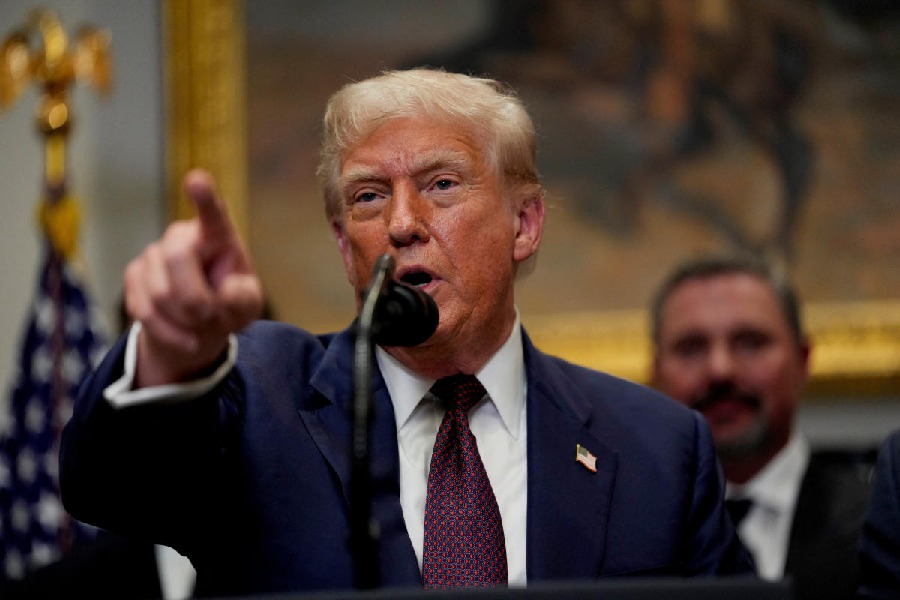
New Delhi, Feb. 19: The Narendra Modi government getting central universities to agree to fly the national flag round the clock is ironic, because the BJP's ideological parent has had a persistently problematic relationship with the Tricolour.
The Rashtriya Swayamsevak Sangh has historically contended that the national flag should be awash in saffron and should particularly drop the colour green, which it believes was included to please Muslims.
These concerns were raised as late as September 19 last year, at a seminar on secularism that the Sangh had hosted in Chennai.
Sangh spokesperson Manmohan Vaidya told the meeting that several members of the flag panel, set up by the Congress in 1931, felt the adoption of multiple colours reflected "communal thought".
After the first Republic Day in 1950, the Sangh never hoisted the Tricolour at its Nagpur headquarters, sticking to its Bhagwa Dhwaj (saffron flag), inscribed with an "Om", even on R-Day and I-Day. It changed the practice in 2002 when Atal Bihari Vajpayee was Prime Minister.
Repeated attempts to contact Vaidya remained unsuccessful today. But BJP Rajya Sabha member Tarun Vijay, a former editor of Sangh-aligned weekly Panchjanya, said that no doubts should be cast on the organisation's "allegiance" to the Tricolour.
"The Sangh lives and dies for the national flag," Vijay said.
Asked why it had refused to raise the flag for 52 years, he replied: "It's not a question of hoisting it or not. The Sangh has a cultural flag that represents India's cultural ethos, prevailing in its temples right from the time of the Mahabharat. The Tricolour is a symbol of India's nationalist pride."
However, K.B. Hedgewar and M.S. Golwalkar, the Sangh's first and third chiefs, had thought otherwise.
When the Congress agreed to hoist the Tricolour in January 1931, Hedgewar circulated a directive among all Sangh shakhas to consider the Bhagwa Dhwaj their national flag.
On July 14, 1946, Golwalkar told a congregation at Nagpur: "It was the saffron flag which in totality represented Bharatiya culture. It was the embodiment of God. We firmly believe that, in the end, the whole nation will bow before this saffron flag."
Golwalkar again aired the Sangh's reservations about the national flag in the essay "The Eternal Basis", part of a compendium of his essays, titled Bunch of Thoughts.
"For example, our leaders have set up a new flag for our country. Why did they do so? It is just a case of drifting and imitating," Golwalkar wrote.
"How did this flag come into being? During the French Revolution, the French put up three stripes on their flag to express the triple ideas of 'equality', 'fraternity' and 'liberty'.... Three stripes therefore held a sort of fascination for our freedom fighters also.
"So it was taken up by the Congress. Then it was interpreted as depicting the unity of the various communities - the saffron colour for the Hindus, the green for the Muslim and the white for all the other communities.
"Out of the non-Hindu communities the Muslim was specially named because in the minds of most of those eminent leaders, the Muslim was dominant and without naming him they did not think that our nationality could be complete!"
To Golwalkar, the inclusion of green did not constitute a "pure and healthy national outlook" but was "just a politician's patchwork, just political expediency".
After Mahatma Gandhi's assassination, there were widespread reports of Sangh activists trampling on the Tricolour.
In an article in The Hindu (September 26, 2004), historian and author Ramachandra Guha wrote of how Jawaharlal Nehru had in a speech on February 24, 1948, highlighted that "at some places members of the RSS dishonoured the national flag. They know well that by disgracing the flag they are proving themselves as traitors."
Atul Kothari, a former ABVP general secretary who heads the Trust for the Uplift of Education and Culture, a Sangh offshoot, played down Golwalkar's statements on the national flag.
"That's from a bygone era," he told this newspaper. "Now the RSS respects and honours the flag."











